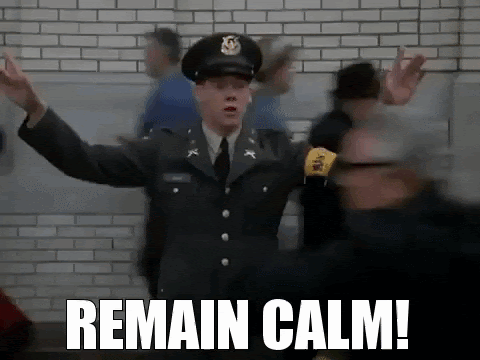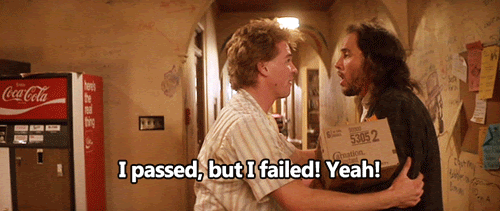
7 Ways Your College or University Blocks Effective Content Strategy (and How to Get Around Them)
Content strategy succeeds best not as an individual crusade, but as a group effort across your organization. But in higher education, the kind of culture change that content strategy often calls for can be hard to come by.
There are a few ways these challenges may present themselves within a college or university. We’ve broken those challenges down here, paired with clarifying GIFs — plus a few strategies for overcoming them.
Lack of Resources

At most colleges and universities, resources are always going to be a major sticking point. It’s hard to find the staffing or the budget to fill the content needs as we uncover them.
Money talks, right? So start talking. Use analytics data and focus groups to uncover how poor content is impacting the bottom line (read: failing with donors and prospects). Tie content to conversions and track how well your content is motivating people to complete business-critical tasks. Then take your findings to the top.
Unclear Priorities

Content is great. We can make and say lots of things! But what should we be making and saying? Without guidance, we may head down a path that does not accurately reflect what your institution wants or needs to communicate, wasting precious resources in the process.
We have to fill that void with purpose. Your institutional strategic plan is a great place to start, providing a framework to which you can align your communication efforts. You can also lead an internal content strategy “Mad Lib” exercise to quickly gain consensus around audiences, messages, and goals.
Poorly Defined Ownership

This is closely tied to #2. Priorities usually stem from leadership—having someone empowered to provide direction, make decisions, and resolve conflict.
A RACI exercise can help understand who is Responsible, Accountable, Consulted, or Informed for various steps in your web content publishing process, and uncover where you have critical gaps. (Some people add an S for Supportive, as well, noting who can help get the job at hand done.)
Inconsistent Decision-Making Process

Once you have an owner and priorities defined, how do you make decisions? Is there a consistent process by which decisions are made about, say, what is featured on your homepage, or what merits coverage via your online newsroom?
If left unstructured, decision-making may be swayed by the loudest voice in the room, the most recent voice heard, or the political concern of the moment. Build out specific processes and criteria by which editorial decisions are made, and ensure everyone’s roles in the process are clearly defined.
Learn more about creating a culture of data-driven decision-making (PDF)
Highly Decentralized Environment

Many institutions struggle with being decentralized. The classic trope of higher ed “silos” is too real, with different schools and departments often operating with little insight into other digital efforts on campus. Content editors may be scattered across campus, with little to no connection back to a central marketing team (or to each other).
This is a major systemic issue, but the first step to building bridges between silos (because, let’s be honest, the silos will likely remain, but we can still try to establish connections between them) is getting people together. Establishing a web content community can be a great first step toward bringing people together outside of their org chart, creating windows into others’ digital priorities and experiences. The next step may be to undertake a meaningful review of your governance model.
Fear of Change

However much change may be necessary — and in higher ed, where in many places legacy print-oriented processes still rule the roost, change is often imperative — it can still be scary. You may be asking people who have done something one way for a long time to suddenly do it a different way, and that’s no small ask. When people get scared, they can get defensive and recalcitrant, which is bad news for everybody.
As things within your organization change, put a priority on supporting people through the change. Play to people’s strengths as you ask them to assume new or different roles. Offer (and budget for) any necessary training. Phase in new changes as gradually as possible. Over-communicate along the way, and reinforce the value of change by reporting back the positive outcomes.
Undefined Success

Content strategy is rooted in goals and purpose. You have to know your desired outcome in order to build a reasonable path to achieve that outcome. But…how will you know when you’ve gotten there? Success metrics must be clearly defined, but sometimes people will hesitate to do so. Because if success is undefined, anything’s a win, right?
Not when it results in squandered resources and missed opportunities. Once you begin to define success (which, as indicated previously, stem from clear ownership and priorities), you can build out a measurement strategy that can yield powerful insights into the effectiveness of your content efforts in driving positive outcomes, encouraging more focused efforts over time.